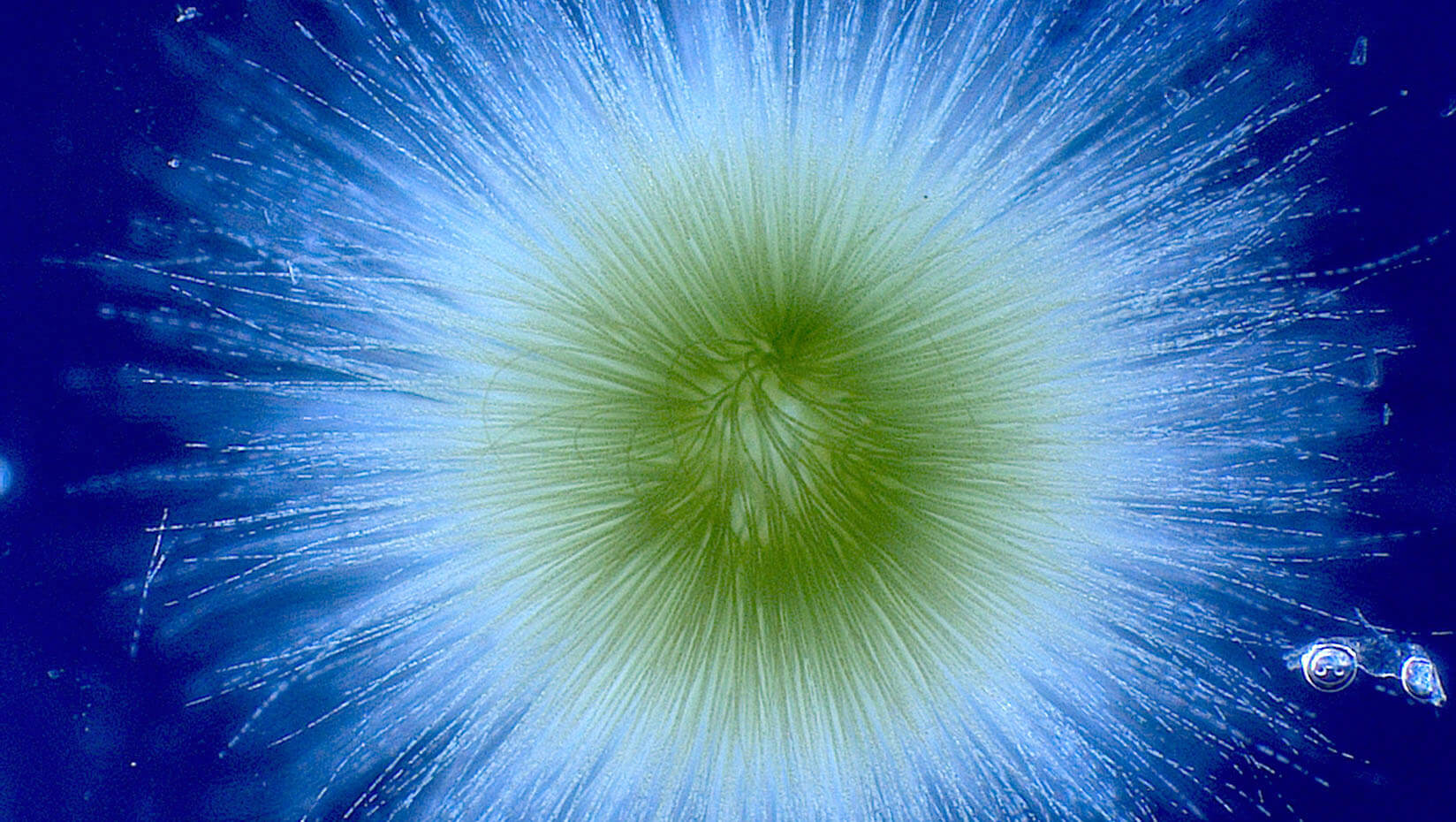
Saros leads research into how warmer winters affect toxic blue-green algal blooms in Maine’s lakes
Toxic blooms of blue-green algae have infested lakes across Maine and the U.S. at greater frequency over the years. The associate director of the Climate Change Institute seeks to understand the role global warming plays in their incidence.
Jasmine Saros will lead a team of researchers from the University of Maine and other institutions in studying how warmer winters affect the presence of these summertime toxic algae accumulations, known as cyanobacterial harmful algal blooms (cyanoHABs), in Maine lakes over the past 125 years. Michael Kinnison, Maine Center for Genetics in the Environment, Peter Countway from the Bigelow Laboratory for Ocean Sciences, Denise Bruesewitz from Colby College, and Charlie Culbertson from the U.S. Geological Survey New England Water Science Center will work with Saros on the project.
The study, funded by a $249,432 grant from the U.S. Geological Survey, will particularly focus on how rising temperatures in the winter months have influenced the prevalence of Gloeotrichia. The toxin producing, bloom-forming species serves as the primary cyanoHAB of concern in lakes with low or medium levels of nutrients. It also produces microcystin-LR, the most prevalent and harmful cyanobacterial toxin in Maine and the Northeast, according to researchers.
Information from Saros and her colleagues’ research could enhance warning systems for summer cyanoHABs and help government officials and nonprofit lake management agencies prepare for them based on conditions from prior winters.
“The ecological factors that promote formation of cyanoHABs are poorly understood, and large uncertainty remains about how climate interacts with other drivers to shape cyanoHABs,” says Saros, also a professor of paleolimnology and lake ecology in the UMaine School of Biology and Ecology. “The long-term perspective provided by the fossil record in lake sediments will help us to understand the role of climate in driving these blooms.”
Winter has become the fastest changing season in Maine, with the warming rate twice that of summer. With past studies finding a link between cyanobacterial summer blooms and winter conditions, and the presence of Gloeotrichia increasing in low-nutrient lakes in the Northeast, the question of how warming winters influence the frequency of these blooms has come to the forefront.
Saros and her team will confirm the forces that drive the uptick in cyanoHABs over the past century by harvesting, dating and analyzing sediment cores from 12 lakes varying in nutrient concentrations and climate zones. They will inspect the cores for algal pigments, sedimentary DNA (sedDNA) and sediment chemistry. By conducting multiple analyses on the sediment cores and using climate data and land use records, the group will ascertain how the interaction between nutrient composition and temperature affect the frequency of cyanoHABs, and how increasing temperatures during winters have influenced their presence. Researchers also hope to learn how the effects of warming winters relate to cyanobacterial diversity and cyanoHAB dominance overtime.
The study will support ongoing research conducted through the Maine-eDNA program facilitated by Maine EPSCoR (Established Program to Stimulate Competitive Research). The team will recruit a UMaine Ph.D. student to conduct pigment and metabarcoding analyses of sediment cores, and two undergraduate students from Colby College to help perform sediment coring and chemical analyses and present team findings at conferences.
The USGS allocated the funding for the project as part of the national Water Resources Research Institute (WRRI) Grant Program. The Senator George J. Mitchell Center for Sustainability Solutions houses Maine’s congressionally authorized water institute and receives the base funding from the national- and state-level WRRI grant funding programs.
“We’re excited about this project because it will advance understanding of this important issue by using new tools developed through Maine-eDNA and by continuing strong partnerships with Maine DEP (Department of Environmental Protection), the Portland Water District and Lakes Environmental Association with help from USGS funding,” Saros says.
Contact: Marcus Wolf, 207.581.3721; marcus.wolf@maine.edu
